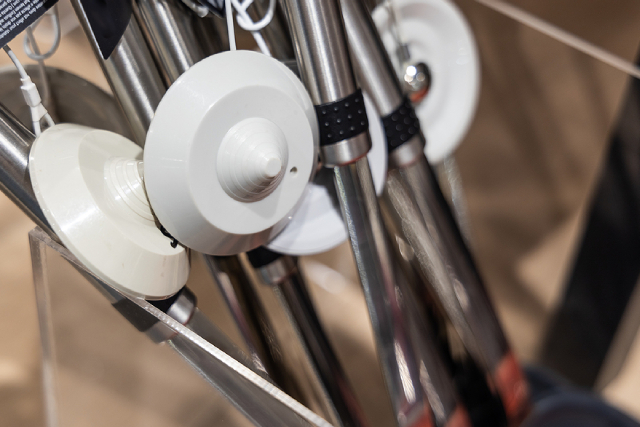Redefining Retail: RFID’s Competitive Edge on the Shop Floor

The intense competitive landscape of the retail industry means that delivering seamless, personalised, and connected experiences on the shop floor is no longer a differentiator but rather a standard that all businesses must strive to meet. Modern consumers are digital natives—motivated by convenience and quick to abandon experiences that fail to meet their expectations.
On average, approximately 80% of global consumers deem excellent customer service essential for brand loyalty. However, the definition of “excellent” service is rapidly and continuously evolving. Increasingly, it is characterised by frictionless, data-driven interactions that leverage technology to meet needs proactively and precisely. At the heart of this evolution lies RFID technology, which is fundamentally transforming retail environments through various meaningful use cases.
By enabling real-time, item-level data collection and analysis, RFID systems support smarter operations, better inventory control, and customer-centric experiences on the shop floor—paving the way for intelligent, agile retail environments.
Elevating Personalisation with Inventory Intelligence
Modern consumers seek tailored experiences that reflect their preferences and purchase history. RFID enables this personalisation by providing retailers with continuous visibility into inventory, often achieving accuracy rates of up to 99%. This degree of precision empowers store associates to give immediate, accurate responses to stock queries, facilitate endless aisle capabilities, and suggest relevant products that align with a customer’s interests.
Moreover, when integrated with customer relationship management (CRM) systems, RFID data enhances customer profiling by linking in-store activity with broader behavioural insights. This comprehensive view allows brands to curate targeted promotions, loyalty programs, and recommendations that resonate more deeply with individual shoppers. Retailers in the fashion, lifestyle, and footwear sectors are actively capitalising on this convergence of inventory and customer data to narrow the gap between digital insights and physical experiences.
Accelerating Checkout with RFID Automation
Checkout delays continue to be a major source of dissatisfaction on the shop floor. Lengthy queues and slow payment processes contribute to cart abandonment and reduced customer satisfaction. RFID-enabled self-checkout solutions offer a smart alternative by replacing traditional barcode scanning with instant, multi-item recognition.
By enabling items to be scanned collectively in just a few seconds, RFID drastically reduces transaction times—often down to 30 seconds or less. This streamlined process significantly improves customer flow, especially during peak hours.
Advanced implementations can also integrate loyalty system sign-ups, digital couponing, and support for multiple payment methods, further enhancing the checkout experience. As these systems take over routine tasks, store staff can be reassigned to advisory or storytelling roles that deliver greater value on the shop floor.
A notable and related innovation in this space is the RFID smart trolley or smart cart, which allows customers to add RFID-tagged products directly to a cart equipped with sensors. With the right backend infrastructure and system implementation, these solutions can enable real-time product scanning, dynamic pricing updates, and even automatic payment options—eliminating the need for traditional checkout altogether.
Enhancing Omnichannel Speed and Accuracy
The modern retail experience is no longer confined to a single touchpoint. Customers expect consistency and speed across physical and digital channels—a demand that RFID is uniquely suited to meet. Once tagged, items can be tracked throughout their journey in the supply chain, providing end-to-end visibility that supports omnichannel fulfilment strategies.
This real-time traceability reduces the risk of stockouts and enables prompt replenishment, ensuring item availability for services such as Buy Online, Pick Up In Store (BOPIS), Ship-from-Store, and Buy Online, Return In Store (BORIS). On the shop floor, staff can swiftly verify the availability or authenticity of items and fulfil in-store pickup requests with greater efficiency.
Advanced RFID systems also power intelligent features such as alternative product suggestions for out-of-stock items and automated low-stock alerts, contributing to faster response times and fewer lost sales. These improvements not only enhance the customer journey but also generate measurable gains in operational performance, labour efficiency, and inventory turnover.
Conclusion
RFID has evolved from a niche solution into a cornerstone of next-generation retail operations. By enabling real-time data visibility, automating critical workflows, and supporting omnichannel integration, RFID delivers a more responsive and intelligent shop floor experience.
As the industry continues to embrace digital transformation, RFID represents a strategic investment that aligns with long-term goals for efficiency, personalisation, and customer satisfaction—positioning retailers to thrive in an increasingly dynamic and competitive environment.